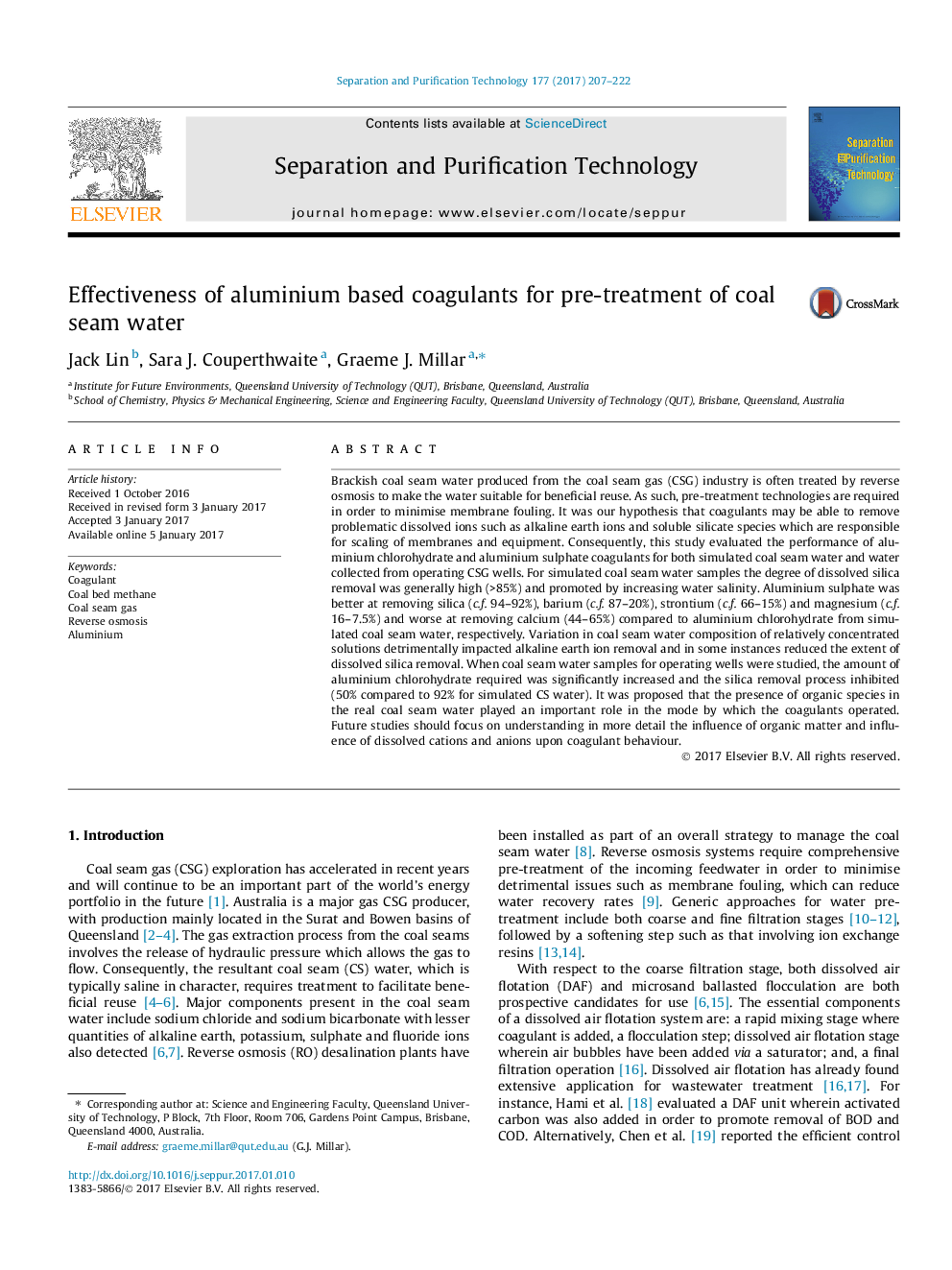| Article ID | Journal | Published Year | Pages | File Type |
|---|---|---|---|---|
| 4990137 | Separation and Purification Technology | 2017 | 16 Pages |
Abstract
Brackish coal seam water produced from the coal seam gas (CSG) industry is often treated by reverse osmosis to make the water suitable for beneficial reuse. As such, pre-treatment technologies are required in order to minimise membrane fouling. It was our hypothesis that coagulants may be able to remove problematic dissolved ions such as alkaline earth ions and soluble silicate species which are responsible for scaling of membranes and equipment. Consequently, this study evaluated the performance of aluminium chlorohydrate and aluminium sulphate coagulants for both simulated coal seam water and water collected from operating CSG wells. For simulated coal seam water samples the degree of dissolved silica removal was generally high (>85%) and promoted by increasing water salinity. Aluminium sulphate was better at removing silica (c.f. 94-92%), barium (c.f. 87-20%), strontium (c.f. 66-15%) and magnesium (c.f. 16-7.5%) and worse at removing calcium (44-65%) compared to aluminium chlorohydrate from simulated coal seam water, respectively. Variation in coal seam water composition of relatively concentrated solutions detrimentally impacted alkaline earth ion removal and in some instances reduced the extent of dissolved silica removal. When coal seam water samples for operating wells were studied, the amount of aluminium chlorohydrate required was significantly increased and the silica removal process inhibited (50% compared to 92% for simulated CS water). It was proposed that the presence of organic species in the real coal seam water played an important role in the mode by which the coagulants operated. Future studies should focus on understanding in more detail the influence of organic matter and influence of dissolved cations and anions upon coagulant behaviour.
Related Topics
Physical Sciences and Engineering
Chemical Engineering
Filtration and Separation
Authors
Jack Lin, Sara J. Couperthwaite, Graeme J. Millar,
